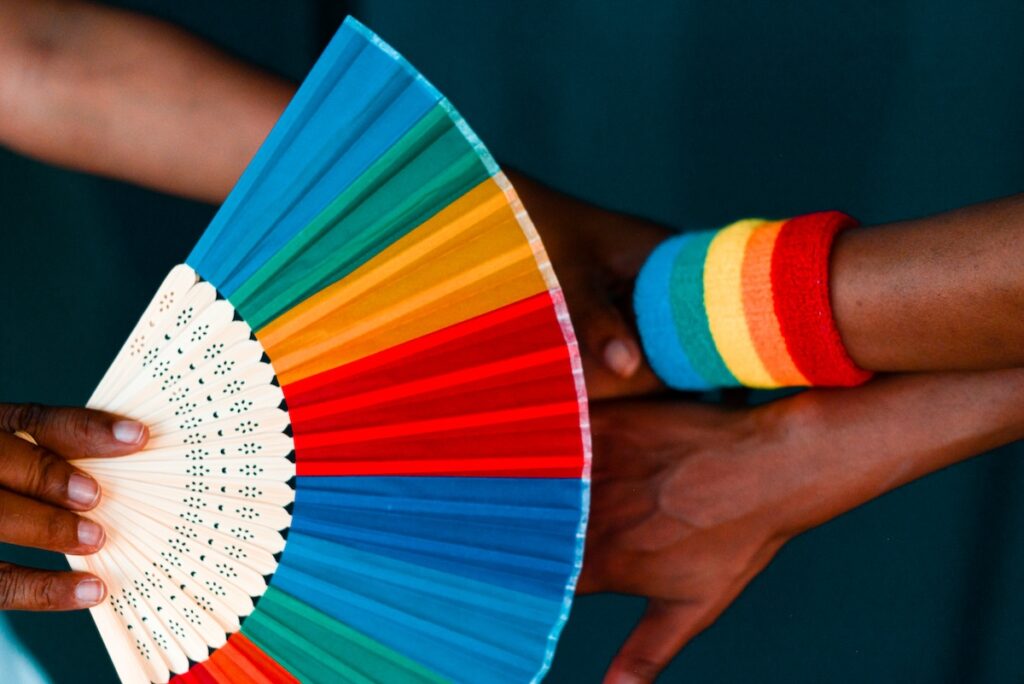Aastha is an Indian widow. She comes from a low-income background, with very little access to the world outside of her society. Aastha travels to the United States to live with her brother and his family after the death of her husband.
One evening, as the family gets ready to go to a wedding, Aastha’s white sister-in-law comes up to her and asks her to wear something other than white because that’s the color the bride is supposed to wear.
Coming from a small town in Punjab, Aastha is unaware of this cultural difference and it upsets her immensely. In the Indian tradition, a widow is supposed to wear white and no other color after her husband passes.
This conflict of culture arises from a very small issue, and that is the lack of knowledge about how color is perceived differently in various cultures.
In this article, we will explore how color psychology among cultures varies and become aware of the more grim aspects of it such as the conflict mentioned between colors brides wear and colors widows wear, while acknowledging the fact that literacy of color symbolism is used as a tool for international relations and multinational companies to operate effectively without offending their customers around the globe.
White
Universally, white is considered a symbol of purity, of the doctor’s lab coat but this universal indication is influenced by Western cultures. In the West, it is the color for a bride’s wedding day dress, it is the color of angels and peace, and is associated with cleanliness. In the East, however, it indicates sorrow.
It is a representation of mourning more often than not. In the United States, Britain, and Iran brides wear white.
The former two are Western countries but Iran is in the East. This just goes to say that with time and influence from other cultures, certain places deviate from the “norm” of their color psychology. In the Indian culture, white is the absence of color, hence must be the only color worn by a woman whose husband has died because it is considered inauspicious and bland, just like her life should be as a widow.
On the contrary, in Thailand white elephants are considered auspicious. In China, India, and Pakistan, it symbolizes death and mourning. Most Asian countries synonymously accept it as a color of purity, mourning, virginity, and morality.

Black
Black is the representation of darkness, of the unknown, and of evil. In the East, black is associated with the opposite, being good health, richness, and prosperity. In Saudi Arabia, most cars owned by the elite are black for the same reason.
In India, it is the color of “Kala” or Lord Shiv, the god of death, and of “Kaali”, the goddess of time, change, and destruction. Both words Kala and Kali are the literal Hindi translation of black. Indians believe that black is evil and negative.
Black magic is a worldwide phenomenon and the reason it is called that is because of the use of dark magic to harm someone.
The Australian Aborigines used black for ceremonial purposes. In the Muslim world, black is the color that covers the Holy Kaaba in Mecca, is it used to ward off evil, and one sect known as the Shias wear it during the month of Moharram as a sign of mourning the deaths of their leaders who died several centuries ago. In Africa, it is associated with age and wisdom. In the West, it is the color worn at funerals and is used for power and control.
Red
Typically in the West, red is the color of love and danger, this energetic color is all sorts of good and bad news. It is the color of holidays such as Christmas and Valentine’s Day. In Christian belief red is sacrifice and passion whereas in the Hebrew tradition is the color of sin.
Brides in the East, especially India and Pakistan wear red dresses for their wedding. It also represents fertility, wealth, beauty and love, fire and danger.
It signifies good fortune in the East, along with being a symbol of happiness. South African culture uses red as the color of mourning.
Most Chinese restaurants we visit usually have a lot of Red incorporated in their décor, and the name Red Emperor is not uncommon for such joints. This is because in China red is believed to bring good luck, especially during celebrations such as the Chinese New Year. Cherokees think of red as a color to bring victory and success.
In Japanese culture, red is an angry color, it symbolizes life and danger. Nigerian chiefs are the only ones allowed to wear red for special ceremonies. The Australian Aborigines believe it is the color of the land and earth.

Blue
Blue is widely accepted as a safe and secure color. In the Western world, blue is used to symbolize authority and trust.
A lot of Western nations have incorporated blue in their flags due to this symbolic association. In the United States, blue represents liberalism in politics, in contrast to signifying conservatism in the European Union.
In the Christian faith, blue is the color of Jesus and of Mary’s robe, in Judaism, it is considered holy. The shades play a big role in how this color is interpreted. For instance, sky blue is a happy color and dark blue is a more serious tone. The phrase “something blue” is used in Western bridal traditions because historically blue has been a token of faithfulness, loyalty, and purity. It is a good luck charm that denotes fidelity, love, and modesty.
Most Westerners use it as a color to decorate baby boys’ rooms and buy blue clothes for them due to its masculine connotations. However, in Belgium, it was traditionally used for baby girls. It is a corporate color, seen in offices and other workplaces.
The color of the United Nations symbol, blue shows peace and calm but is also used as a word to describe depression when people say they’re feeling “blue”. Mexicans use blue for mourning, trust, and serenity. In the East, blue signifies immortality.
Friday is associated with blue in Thailand, and in Korea, it is a symbol of mourning. Hindus believe it is the color of Lord Krishna, an avatar of Lord Vishnu the supreme Hindu Lord.
Green
Green is a color that resonates with balance, nature, and renewal across many cultures, but it also carries specific meanings in different parts of the world. In the West, green is often associated with environmental awareness, luck (especially in Ireland where it’s linked to St. Patrick’s Day), and sometimes even with envy, as in the phrase “green with envy.” It’s a color that signifies growth, spring, and a fresh start.
In the Islamic world, green is considered the most significant color, symbolizing paradise in the Quran, and is often found in the decoration of mosques and the flags of several Muslim countries. It represents respect and the life-giving qualities of nature.
In China, green can be associated with infidelity; a green hat symbolizes that a man’s wife is unfaithful. This cultural connotation makes the color somewhat less auspicious than it is in the West.
In Japan, green is considered a color of eternal life. Interestingly, historically, the Japanese did not distinguish blue from green until more recent times. The traffic lights in Japan, which appear bluish-green, are a testament to this cultural perception.
In India, green is a significant color in Hinduism, representing life and happiness. It is also a festive color worn during the celebration of spring and harvest festivals.

Yellow
Yellow, the color of sunshine, is universally associated with warmth, light, and happiness. It’s a color that stimulates mental activity and generates muscle energy. In the West, yellow is also sometimes associated with caution, as seen in traffic lights and warning signs.
In China, yellow is an imperial color historically worn by emperors; it represents power, royalty, and respect. It is also considered the center of everything, akin to the Earth’s color in traditional Chinese color symbolism, and is associated with earth and fertility.
In Egypt, yellow is the color of mourning. In contrast, in Japan, it signifies courage and nobility. The use of yellow in Japan has evolved significantly over the centuries, with it now being a popular color in contemporary design and fashion.
In India, yellow is a symbol of knowledge and learning. It is also associated with spring and the festival of Vasant Panchami, where people wear yellow to mark the blossoming of mustard flowers.
Purple
Purple is a color of royalty, nobility, luxury, and ambition. It symbolizes power, nobility, luxury, and ambition. It conveys wealth and extravagance. Historically, purple dye was very expensive and difficult to produce, which is why it was often reserved for royalty and the upper class.
In the West, purple is also associated with wisdom, dignity, independence, creativity, mystery, and magic. It’s a color often used to represent luxury brands and high-quality products.
In Thailand, purple is the color of mourning for widows. The deep connection to mourning is specific to this culture and contrasts with its association with royalty and nobility in the West.
In Brazil and many parts of South America, purple is also associated with mourning and is worn at funerals and during periods of grief.
In Japan, purple was a color associated with the aristocracy and is still seen as a color of wealth and privilege.
In the Christian tradition, purple is associated with Lent and Advent, periods of preparation and penance, reflecting a different aspect of its symbolic richness.
In conclusion, the symbolism of colors is a fascinating reflection of the diverse tapestry of human culture and tradition. As we navigate through an interconnected global landscape, the understanding and appreciation of color psychology not only enriches our personal experiences but also enhances our interactions in the professional and social arenas. By acknowledging and respecting the varied meanings colors hold in different cultures, we can avoid misunderstandings and build stronger, more empathetic connections with people from all walks of life. This exploration of color symbolism serves as a reminder of the beauty and complexity of our world, urging us to look beyond our own perspectives and embrace the colorful diversity that surrounds us.
what